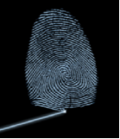Recent studies have shown that the sense of touch is closely linked to higher order perceptions of experience. In its simplest form, as we all know, a product or package that is pleasing to touch will likely have a positive correlation to purchase intent. New research, however, suggests the existence of a far deeper connection and, perhaps, a far greater opportunity for brands.
Consider:
- Test subjects who used heavier clipboards to rate hypothetical job candidates scored them as more serious about the jobs than those using lighter clipboards.
- Test subjects seated on hard chairs for negotiations were less flexible than those who were seated on a cushion.
- Water sampled from a sturdier cup scored better on taste than the same water sampled from a flimsy cup.
So what does this mean in the context of in-store experience?
- In-store Demos – If you plan to demo that fancy new hand processor, you might consider investing in better plates for serving the samples.
- Merchandise – May be something as simple as branded grocery bags (that become heavy when filled) could help boost a brand’s perceived weight/value.
- Sales Environments – If you’re selling cars, you might consider investing in cushier chairs.
The simple reality appears to be that how we experience the things we touch goes far deeper than merely tactile aesthetic.
Contributed by Ian Whitney, Paris


